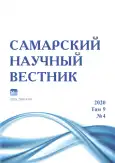Влияние сложных компостов на рост и динамику численности вермикультуры
- Авторы: Наконечный Н.В.1, Ибрагимова Д.В.1
-
Учреждения:
- Сургутский государственный университет
- Выпуск: Том 9, № 4 (2020)
- Страницы: 121-124
- Раздел: Общая биология
- URL: https://journals.rcsi.science/2309-4370/article/view/59442
- DOI: https://doi.org/10.17816/snv202094118
- ID: 59442
Цитировать
Полный текст
Аннотация
В статье рассматривается роль сложных компостов из остатков сточных вод и пивной дробины на динамику роста вермикультуры Esenia foetida в условиях закрытого грунта как региональный аспект устойчивого развития территории Югры. Использованы субстраты: почвенный грунт с общим содержанием гумуса 1,83 ± 0,51%, остатки сточных вод (ОСВ), пивная дробина, растения, пищевые отходы, бумага, птичий помет, микробиологический препарат «Тамир», а также по 50 неполовозрелых червей гибрид «Старатель». Опыт длился 30 дней. В каждом варианте компоста было 7 повторностей с микропрепаратом (МП) и червями, а также 2 контроля без червей: с МП и без нее. Сложные компосты показали положительную динамику по приросту числа дождевых червей и их общей массы. Снижение массы субстрата после вермикомпостирования с применением микробиологического препарата «Тамир» наблюдали во всех вариантах. Установлено статистически закономерное уменьшение массы субстрата со временем за счет роста червей. Оптимальная температура для развития червей +21°C, а значения pH, при которых наблюдалась высокая численность червей, находятся в диапазоне от 7,8 до 8,2. Таким образом, возможно применение всех вариантов сложных компостов. Процесс разложения и положительная динамика роста червей наблюдалась с разной скоростью. Использование пивной дробины в сыром состоянии возможно при внесении 10–25% от общей массы компостируемого субстрата с органическими компонентами обладающими сорбционной способностью.
Полный текст
Открыть статью на сайте журналаОб авторах
Николай Владимирович Наконечный
Сургутский государственный университет
Автор, ответственный за переписку.
Email: yyd@list.ru
кандидат биологических наук, научный сотрудник научно-образовательного центра института естественных и технических наук
Россия, СургутДинара Владимировна Ибрагимова
Сургутский государственный университет
Email: danaya_21@mail.ru
кандидат биологических наук, преподаватель кафедры биологии и биотехнологии
Россия, СургутСписок литературы
- Иларионов С.А., Калашникова И.Г. Биоконверсия органических отходов с помощью вермикультивирования // Дождевые черви и плодородие почв: мат-лы I междунар. конф. Владимир, 21–23 ноября 2002 г. Владимир, 2002. С. 34–36.
- Титов И.Н. Дождевые черви. Руководство по вермикультуре в двух частях. Ч. I: Компостные черви. М.: ООО «МФК Точка Опоры», 2012. 284 с.
- Игонин А.М. Как повысить плодородие почвы в десятки раз с помощью дождевых червей. М.: Маркетинг, 2002. 30 с.
- Князева В.А., Кравец А.В., Терещенко Н.Н. Оценка эффективности вермикомпостирования для утилизации пивной дробины // Аграрная наука – сельскому хозяйству: XIV междунар. науч.-практ. конф. 7–8 февраля 2019 г. Барнаул: РИО Алтайского ГАУ, 2019. С. 348–350.
- Моисеев А.А., Наконечный Н.В. Вермикультивирование компостных червей гибрида Старатель в субстратах из остатков сточных вод и пивной дробины // Отходы, причины их образования и перспективы использования: сб. науч. тр. по мат-лам междунар. науч. экол. конф. / сост. Л.С. Новопольцева; под ред. И.С. Белюченко. Краснодар: КубГАУ, 2019. С. 538–541.
- Еськов А.И. Органические удобрения в земледелии России // Дождевые черви и плодородие почв: мат-лы II междунар. науч. конф. Владимир, 2004. С. 129–131.
- Варламова Л.Д. Эколого-агрохимическая оценка и оптимизация применения в качестве удобрений органосодержащих отходов производства: автореф. дис. … д-ра с/х. наук: 20.09.07. Саранск, 2007. 42 с.
- Касатиков В.А. К вопросу о влиянии вермикомпостирования осадков сточных вод на их агроэкологические свойства // Плодородие. 2006. № 6. С. 40–42.
- Малахова С.Д. Агроэкологическое обоснование почвенного пути утилизации осадков городских сточных вод: на примере г. Калуги: дис. … канд. биол. наук: 03.00.16. Калуга, 2007. 279 с.
- Титов И.Н. Вермикультура: переработка органической фракции отходов // Твердые бытовые отходы. 2008. № 8. С. 18–25.
- Янин Е.Н. Осадки городских сточных вод как источник биологического загрязнения окружающей среды // Экологическая экспертиза. 2009. № 2. С. 48–77.
- Мутиков В.М., Филиппова С.М., Фадеева М.Ф., Васильев Н.И. Рекомендации: по применению биогумуса (вермикомпоста) в полеводстве, садоводстве, овощеводстве и цветоводстве: метод. пособие. Чебоксары, 2009. 46 с.
- Терентьев П.В., Ростова Н.С. Практикум по биометрии. Л.: ЛГУ, 1977. 152 с.
- Тарасов С.И. Нормативно-правовое регулирование оборота органических удобрений // Вестник Всероссийского научно-исследовательского института механизации животноводства. 2019. Т. 2 (34). С. 182–192.









